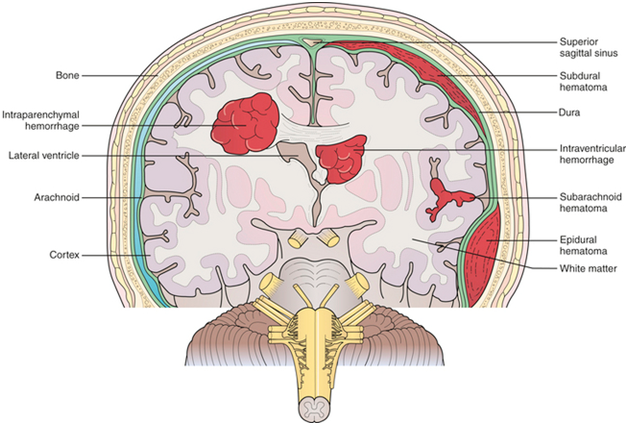

In these cases, the newborn will be transferred to the Neonatal Intensive Care Unit for more testing and treatment.Ī cranial head ultrasound can often access the severity of a brain bleed. A long pause in breathing (apnea) can happen, or the baby can have seizures. If ICH becomes worse, he or she may have poor feeding, a high-pitched cry, or a have a bluish color around the mouth or on the nail beds. With ICH, the swelling may be worse when a vacuum is used, as compared to forceps. After the doctor examines the baby, performs further testing, and rules out a brain bleed, no further medical care is usually needed. Like caput, it can happen without forceps or vacuum, but it is often associated with them.
#Bleeding on the brain skin#
The swelling can be increased when vacuum or forceps is used, but caput will decrease without medical intervention.Ī cephalohematoma is caused by bleeding between the skin and the skull, but it typically does not harm the brain. The cause is the pressure on the baby's crown as she is pushed through the birth canal. In caput succedaneum, the swelling does not happen from bleeding under the scalp, but from bruising. Two other conditions also involve scalp swelling - caput succedaneum and cephalohematoma - that are usually benign. Swelling does not mean the injury involves a significant brain bleed. Most newborns with a brain bleed have some swelling of the scalp.

If there is head swelling, the doctor will examine the baby and watch for worsening of the swelling and for other symptoms. Instead, the baby will be checked for at least 10 hours to assess any head swelling, and the head circumference will be taken. The baby cannot be immediately discharged from the hospital, even if this is what the parents want.

The pediatrician should be notified for any delivery when vacuum or forceps is used. The risk of complications becomes greater, to say the least, if both vacuum and forceps are used (it is almost inevitably medical malpractice if both are used). According to one study, when the delivery is assisted by vacuum or forceps, the risk of a serious newborn complication is 5%. Surgically assisted deliveries - primarily a vacuum or forceps - increase the risk of a brain bleed. But a brain bleed can also happen to term delivery newborns. Premature babies are much more likely to develop this condition, and this is related to the immaturity of their circulation. In practice, a brain bleed can range from insignificant to life-threatening.Ī brain bleed occurs for different reasons. The words "newborn brain bleed" are understandably frightening for the parents. The severity and location of the brain bleed determine how serious the injury might be. It is also called intracranial hemorrhage (ICH) or intraventricular hemorrhage (IVH). This occurs when blood vessels break and bleed into the brain tissue itself. One relatively common complication of childbirth is a neonatal brain bleed.


 0 kommentar(er)
0 kommentar(er)
